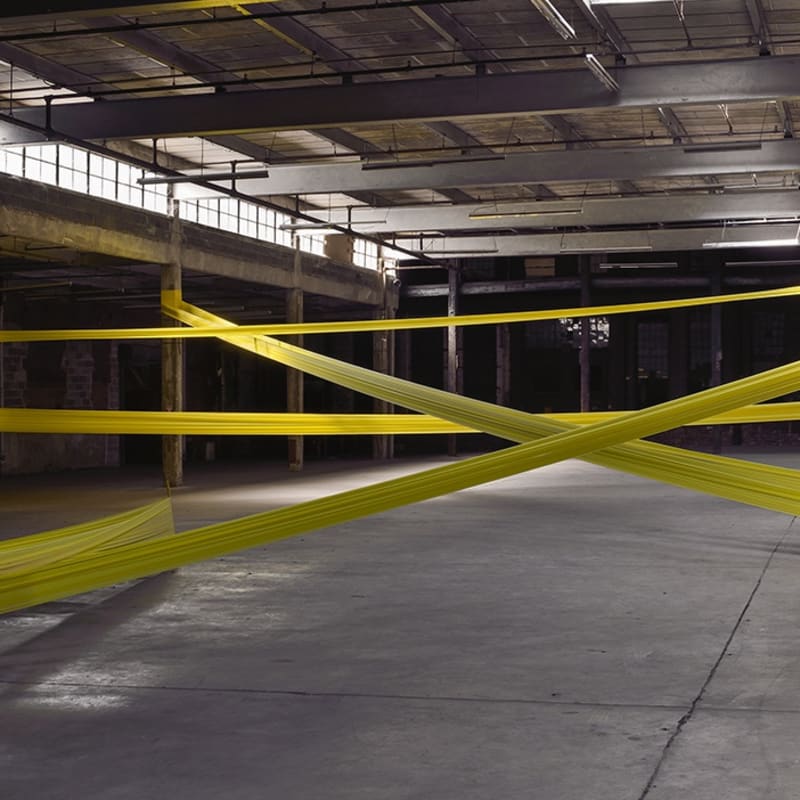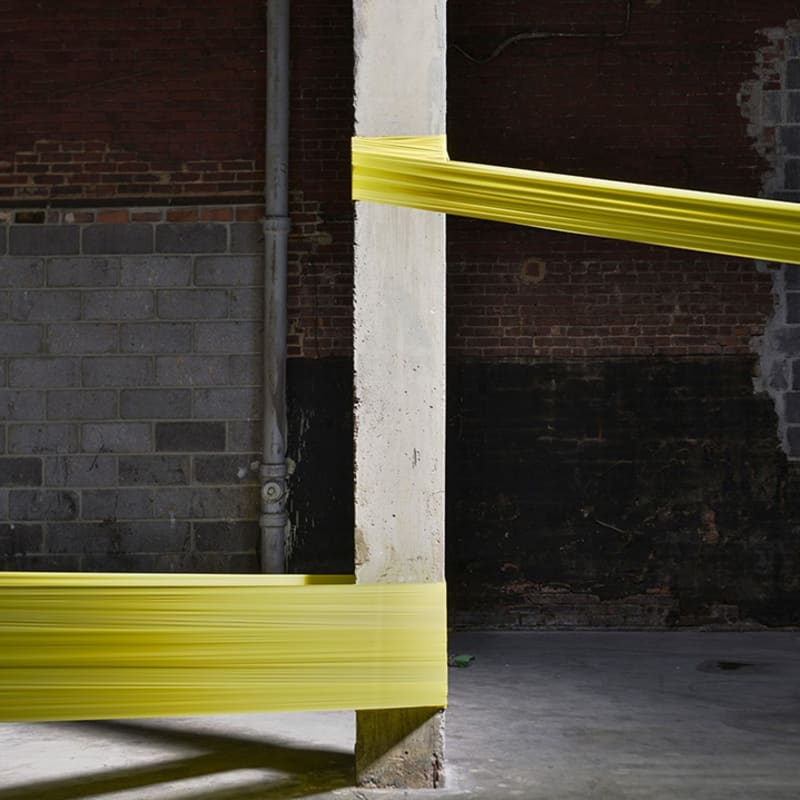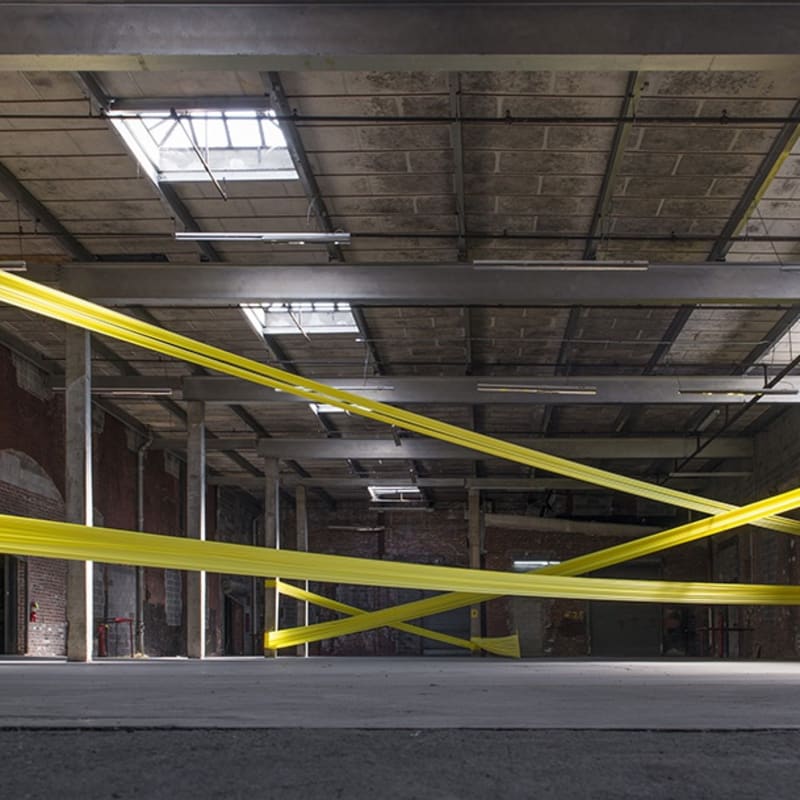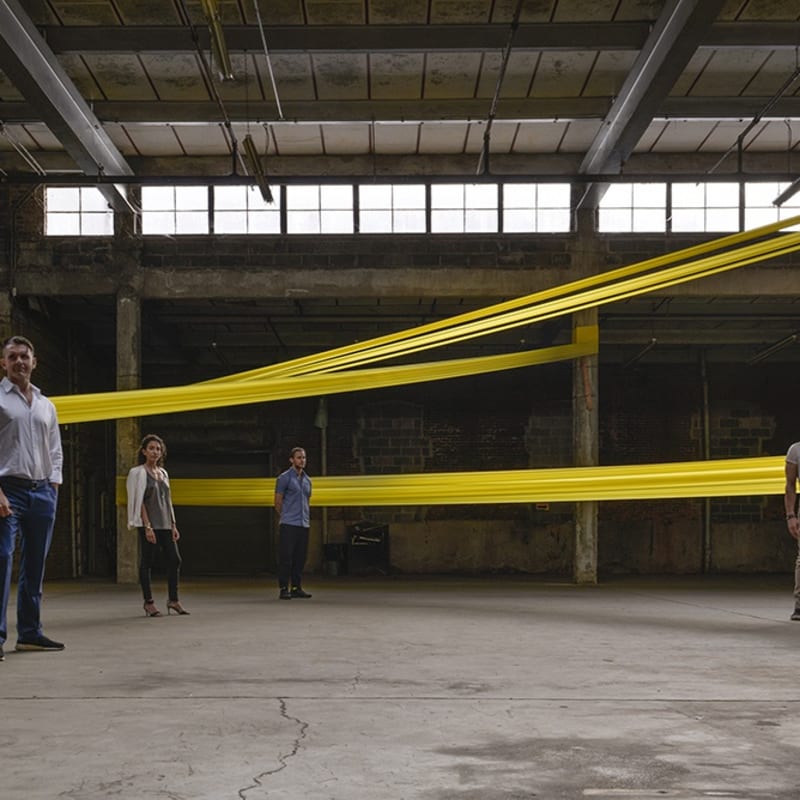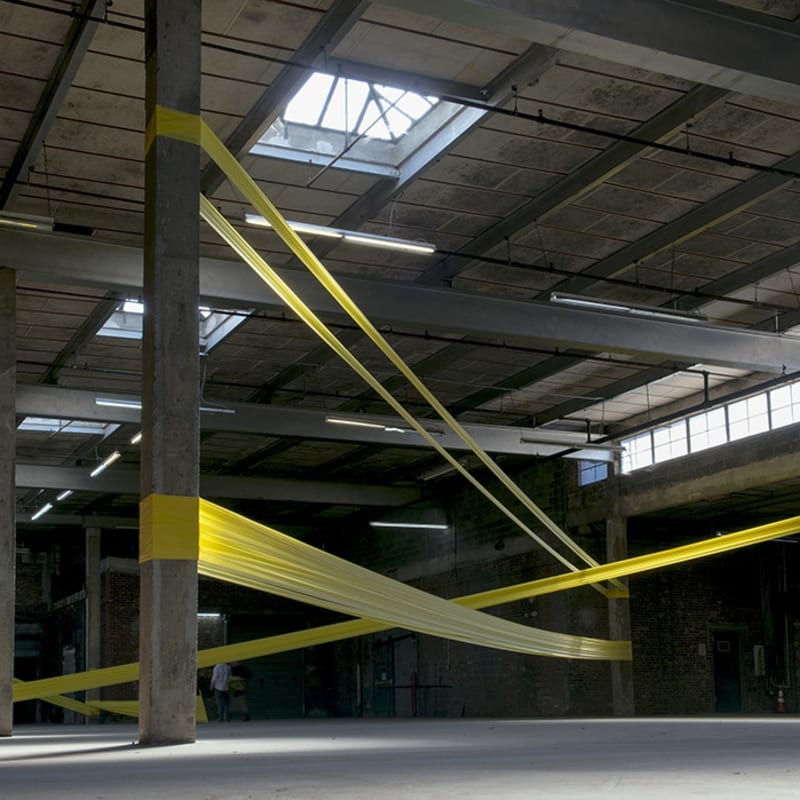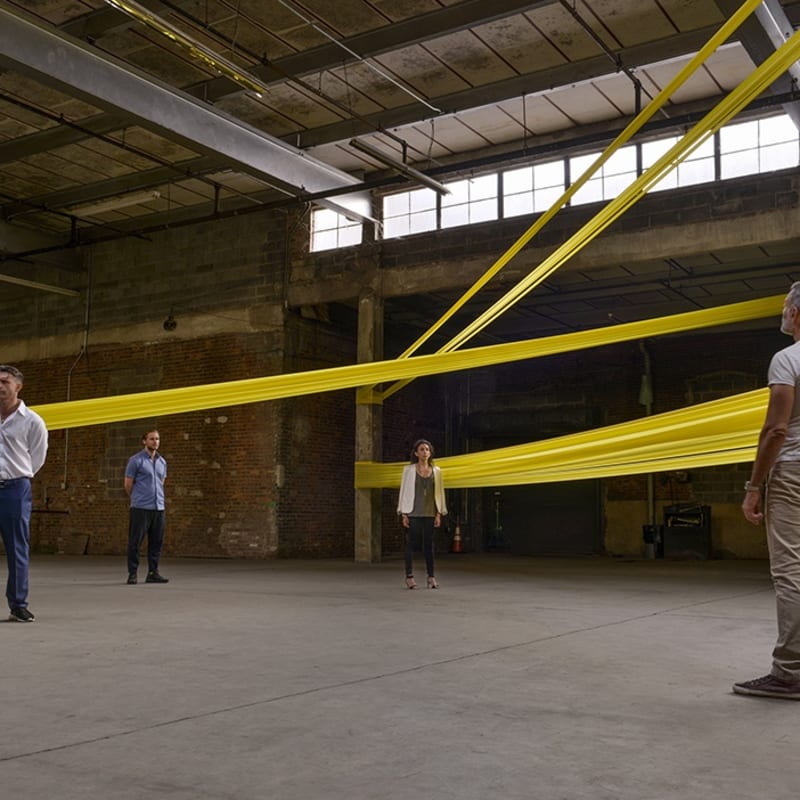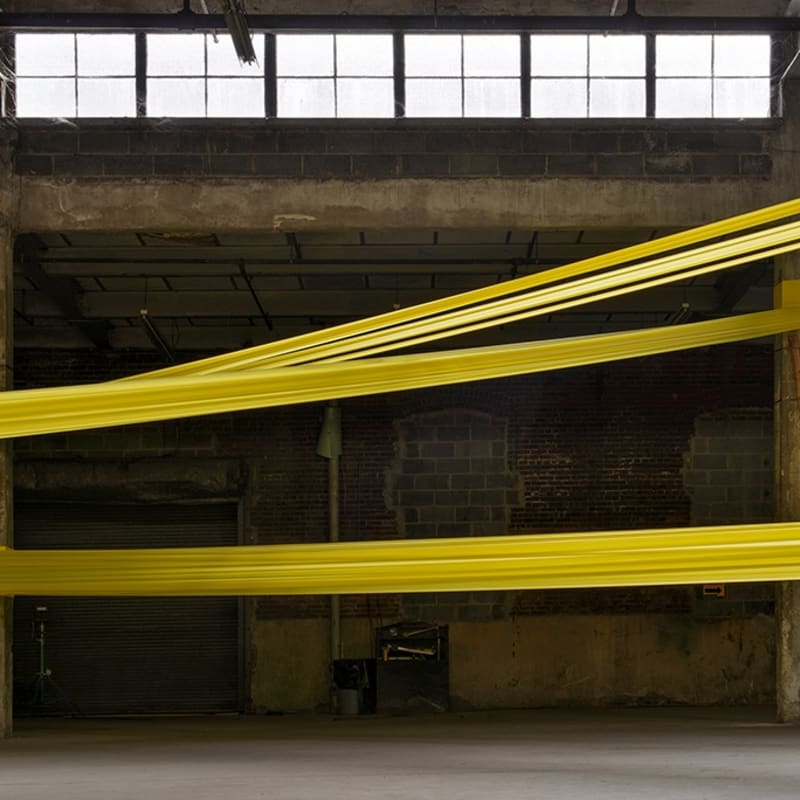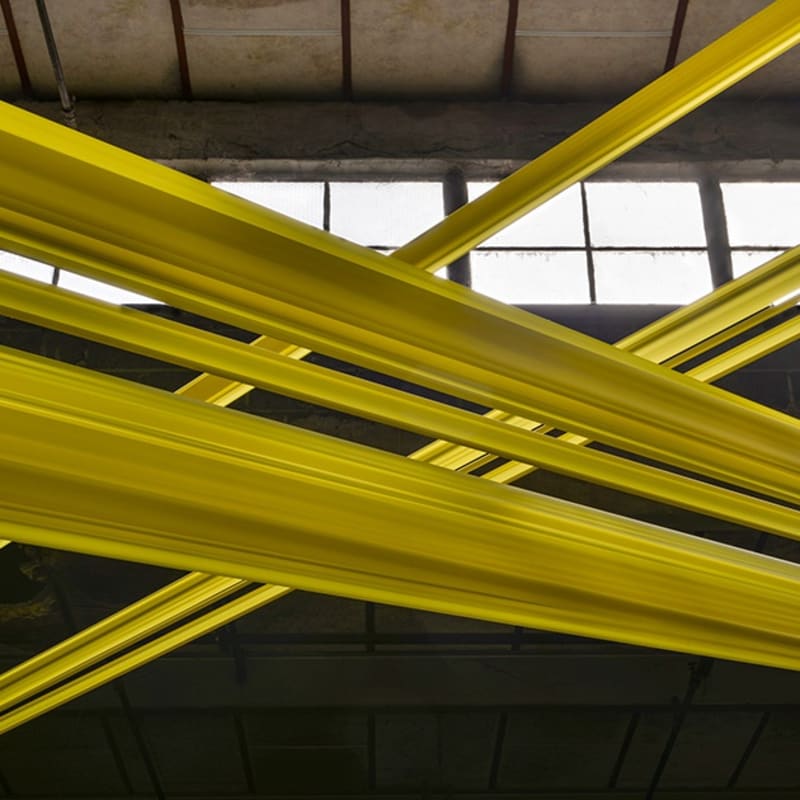Tension is a concept that exists in both the material and mental realm. As a force in the physical world, tension calls to mind the stretching of something between fixed points, perhaps to the moment of rupture. In the realm of psychological, it is used to convey a highly strained state of emotional being. For his latest body of work, “Tension Sculptures” artist Joseph La Piana aims to interrogate these existing definitions, making manifest the underlying dynamic at play in both.
Located on the meridians of Park Avenue—beginning at 53rd and continuing to 70th— five sculptures of varying dimensions bring together La Piana’s interest in exploring the boundaries of tensile strength and the genealogy of each body of work that links them altogether. Comprised of rubber stretched between, and wrapped around stainless steel armatures akin to a cats-cradle, La Piana’s installations brings to the fore the forces of tension, evincing them through the material process of the rubber’s elasticity and potential for change. Exposed to the elements as well as the constant pressures being applied through their taut state, the potential fragmentation of the stretched material allows for a transformative experience at the hand of the forces of tension is a central theme of La Piana’s work. The sculptures continuous need to remain in a state of tension is essential to their identity and physical composition, as a result the artist refers to them as living sculptures.
With these sculptures, the rigid, linear nature of La Piana’s “Tension Paintings” is translated into three dimensions, inviting the viewer to observe the forces of gravity and tension as they act upon, and alter the form of, each of the five sculptures. But the “Tension Sculptures” also extend the conceptual dialogue that has come to define La Piana’s ongoing body of work. With the sculptures, he finds parallels between his work and the current experiences of individuals on a global, social scale. Every day, tensions are promulgated by conflicts—whether political, social, environmental, or interpersonal. These enduring disputes intensify the divisions among us. La Piana’s sculptures, stretched to their capacity, echo this state of cultural and emotional disruption.
Ultimately, it is La Piana’s hope that we explore the parallels between his sculptures and the current state of affairs. Tension is a powerful force: it is a source of internal and external agonism that brings to the fore questions, real and metaphorical, about states of integrity in the face of growing dissonance and countervailing pressures placed on our collective identities.
